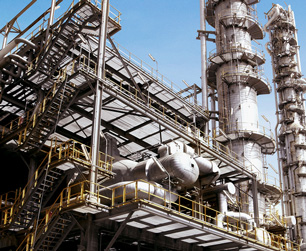Ethylbenzene
| EPA Maximum Contaminant Level (MCL) |
0.7 mg/L |

Ethylbenzene is an organic compound used primarily in the production of styrene, a chemical compound used in plastics manufacturing. It's also used in paints, insecticides, gasoline blends and other industrial capacities.
Ethylbenzene ends up in drinking water primarily through discharge from factories.
Health Effects of Ethylbenzene
Acute exposure, according to the EPA, can lead to symptoms of “drowsiness, fatigue, headache and mild eye and respiratory irritation.” The agency also warns of long term effects on the liver and kidneys:
Some people who drink water containing ethylbenzene well in excess of the maximum contaminant level [0.7 milligrams per Liter ] for many years could experience problems with their liver or kidneys.
Water Treatment for Ethylbenzene
The EPA recommends granular activated carbon (GAC) for the treatment of ethylbenzene.
Sources: EPA (1), EPA (2), WHO, Photo: WikiMedia, author: Secl
Site Index
Filtration Systems
- Aeration for Iron & Sulfide
- Backwashing Filters
(whole house & well units)
- Chlorine & Chemical Injectors
- Countertop Water Filters
- Emergency Filters
- Garden Hose Filters
- Reverse Osmosis, Residential
- Reverse Osmosis, Commercial
- Shower Filters
- Specialty Filters
- Ultraviolet Systems
- Undersink Filters
- Water Softeners
- Whole House Filters
Cartridges
Parts
- Replacement Parts
- Faucets
- Filter Media
- Fittings
- Housings
- O-rings
- Pumps
- Pura UV
- R.O. Parts
- R.O. Tanks
- R.O. Booster Pump
- VIQUA UV